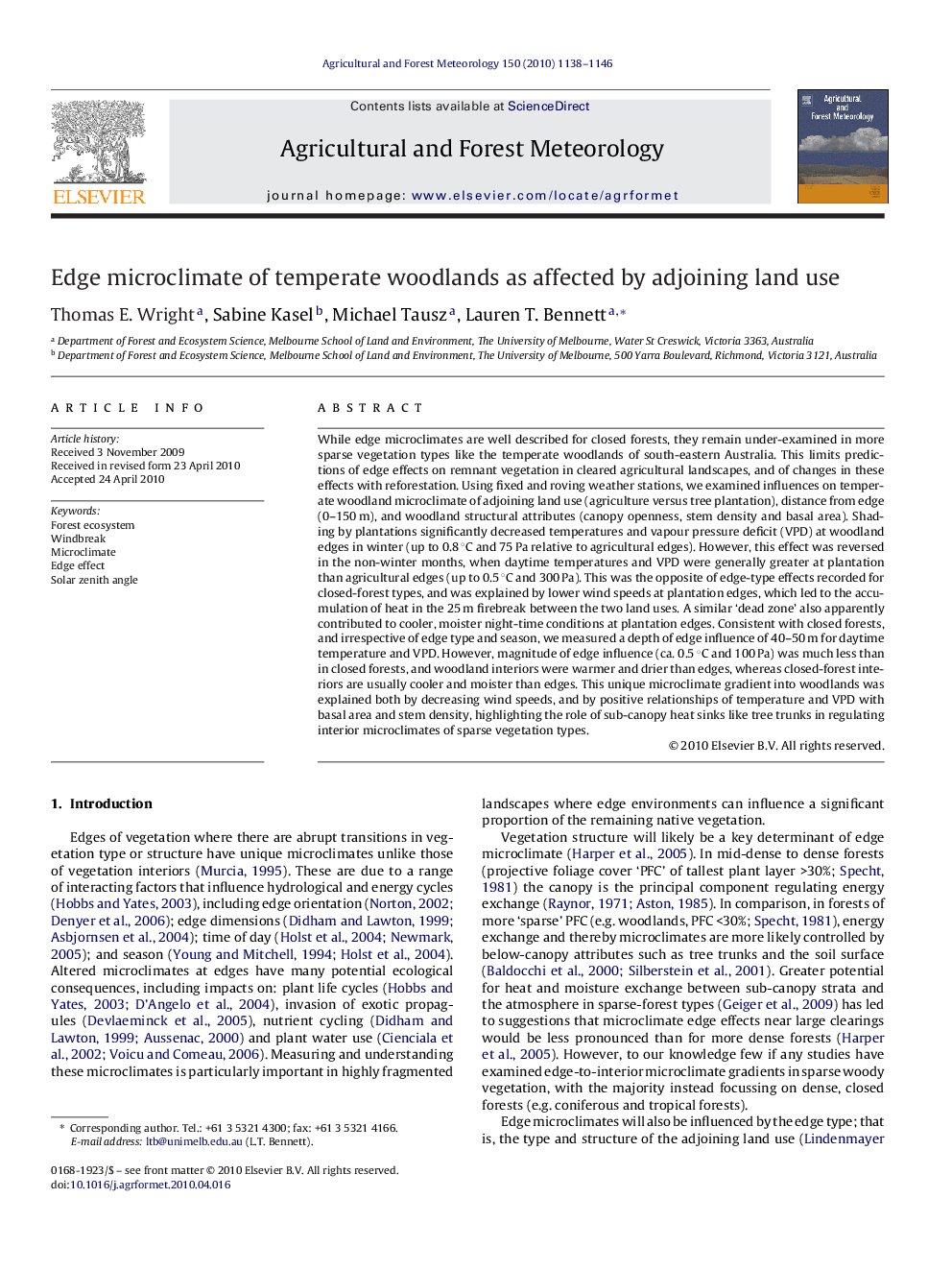| کد مقاله | کد نشریه | سال انتشار | مقاله انگلیسی | نسخه تمام متن |
|---|---|---|---|---|
| 82480 | 158397 | 2010 | 9 صفحه PDF | دانلود رایگان |

While edge microclimates are well described for closed forests, they remain under-examined in more sparse vegetation types like the temperate woodlands of south-eastern Australia. This limits predictions of edge effects on remnant vegetation in cleared agricultural landscapes, and of changes in these effects with reforestation. Using fixed and roving weather stations, we examined influences on temperate woodland microclimate of adjoining land use (agriculture versus tree plantation), distance from edge (0–150 m), and woodland structural attributes (canopy openness, stem density and basal area). Shading by plantations significantly decreased temperatures and vapour pressure deficit (VPD) at woodland edges in winter (up to 0.8 °C and 75 Pa relative to agricultural edges). However, this effect was reversed in the non-winter months, when daytime temperatures and VPD were generally greater at plantation than agricultural edges (up to 0.5 °C and 300 Pa). This was the opposite of edge-type effects recorded for closed-forest types, and was explained by lower wind speeds at plantation edges, which led to the accumulation of heat in the 25 m firebreak between the two land uses. A similar ‘dead zone’ also apparently contributed to cooler, moister night-time conditions at plantation edges. Consistent with closed forests, and irrespective of edge type and season, we measured a depth of edge influence of 40–50 m for daytime temperature and VPD. However, magnitude of edge influence (ca. 0.5 °C and 100 Pa) was much less than in closed forests, and woodland interiors were warmer and drier than edges, whereas closed-forest interiors are usually cooler and moister than edges. This unique microclimate gradient into woodlands was explained both by decreasing wind speeds, and by positive relationships of temperature and VPD with basal area and stem density, highlighting the role of sub-canopy heat sinks like tree trunks in regulating interior microclimates of sparse vegetation types.
Journal: Agricultural and Forest Meteorology - Volume 150, Issues 7–8, 15 July 2010, Pages 1138–1146